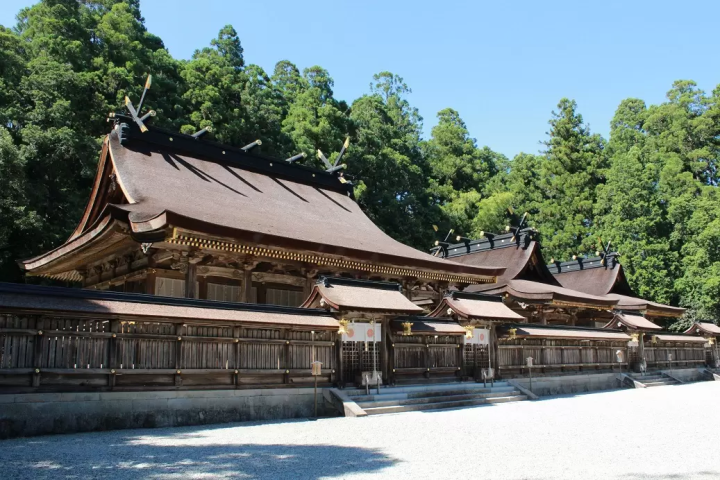[Kumano Pilgrimage I] Kumano Hongu Taisha
-
Table of Contents
- Kumano Hongu Taisha
- Festivals at the Kumano Hongu Taisha
- Yatagarasu Fire Festival
- A Deep Prayer Through Visiting All Three Shrines
Kumano Hongu Taisha
A Sacred Site of Rebirth
According to legend, when Emperor Jimmu (known as Kamuyamato Iwarehiko no Mikoto before ascending to the throne) was on his eastern expedition, he received the heavenly sword "Futsunomitama" from Takakuraji, the son of Kumano's ancestral deity.
With this sword, he overcame adversity and eventually triumphed in battle in the Yamato Province (present-day Nara Prefecture)
Later around 33 BCE, three moons descended upon a sandbank in the Kumano River called "Oyunohara". One proclaimed, "I am Shōjō Daigongen (Ketumi Mikogami = Susanoo-no-Mikoto), and the two moons beside me are Ryōsho Gongen (Kumano Fusumi no Ōkami and Hayatama no Ōkami). Build a shrine and enshrine us." This divine command led to the construction of the first Kumano Hongu Taisha shrine.
As time passed, around the 4th century (estimated), descendants of the Takakuraji assumed the role of Kumano Kokuzō, the chief of the Kumano province. From then on, the deities of Kumano Hongu Taisha were worshipped and protected by the Kokuzō family for over a thousand years. The twelve enshrined deities are divided among three shrines: Upper, Middle, and Lower.
However, the original shrine buildings at Oyunohara were damaged by a major flood in 1889 (Meiji 22), and the upper four shrines were relocated to their current elevated site. The remaining eight shrines are still quietly enshrined at the original site as stone altars.
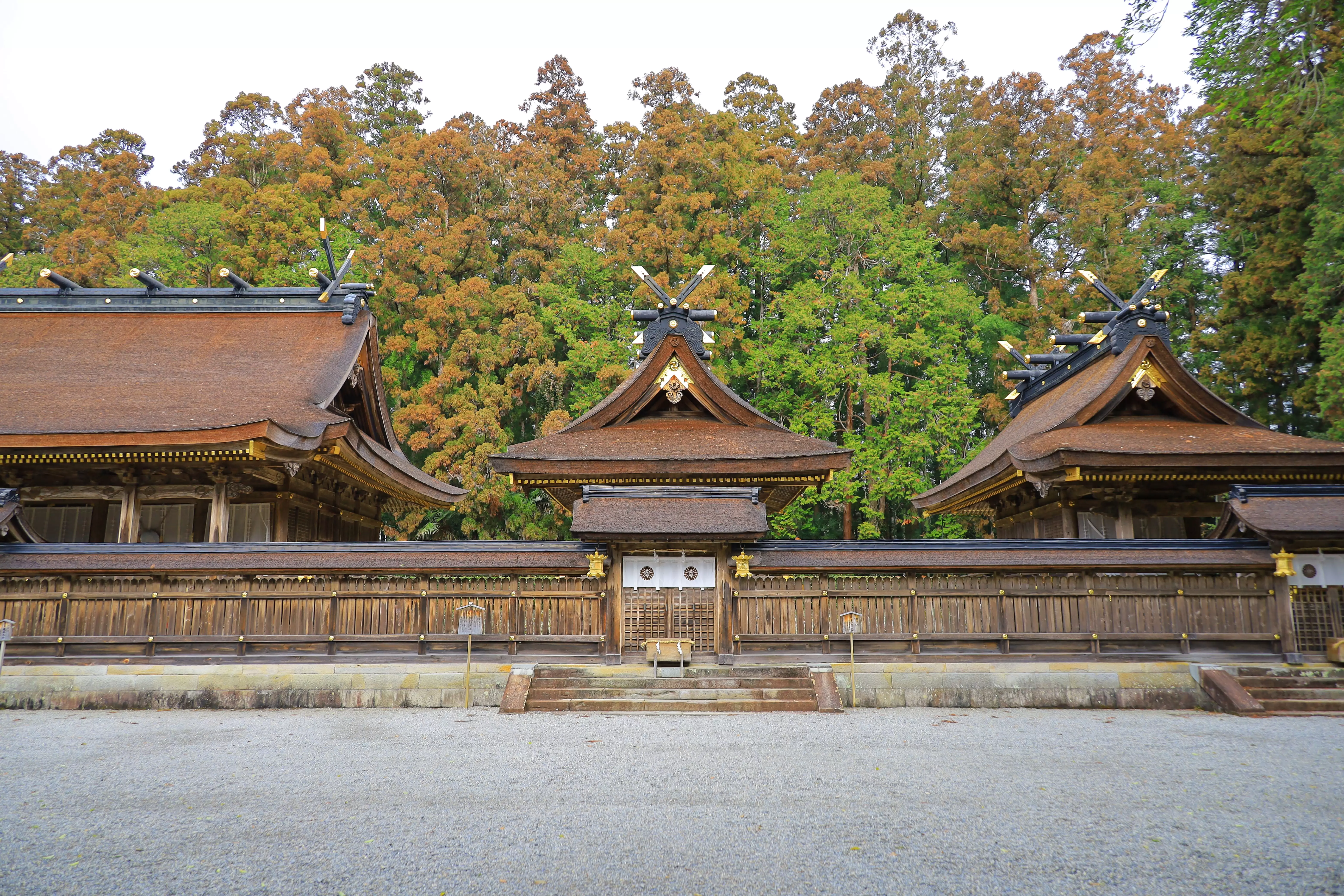
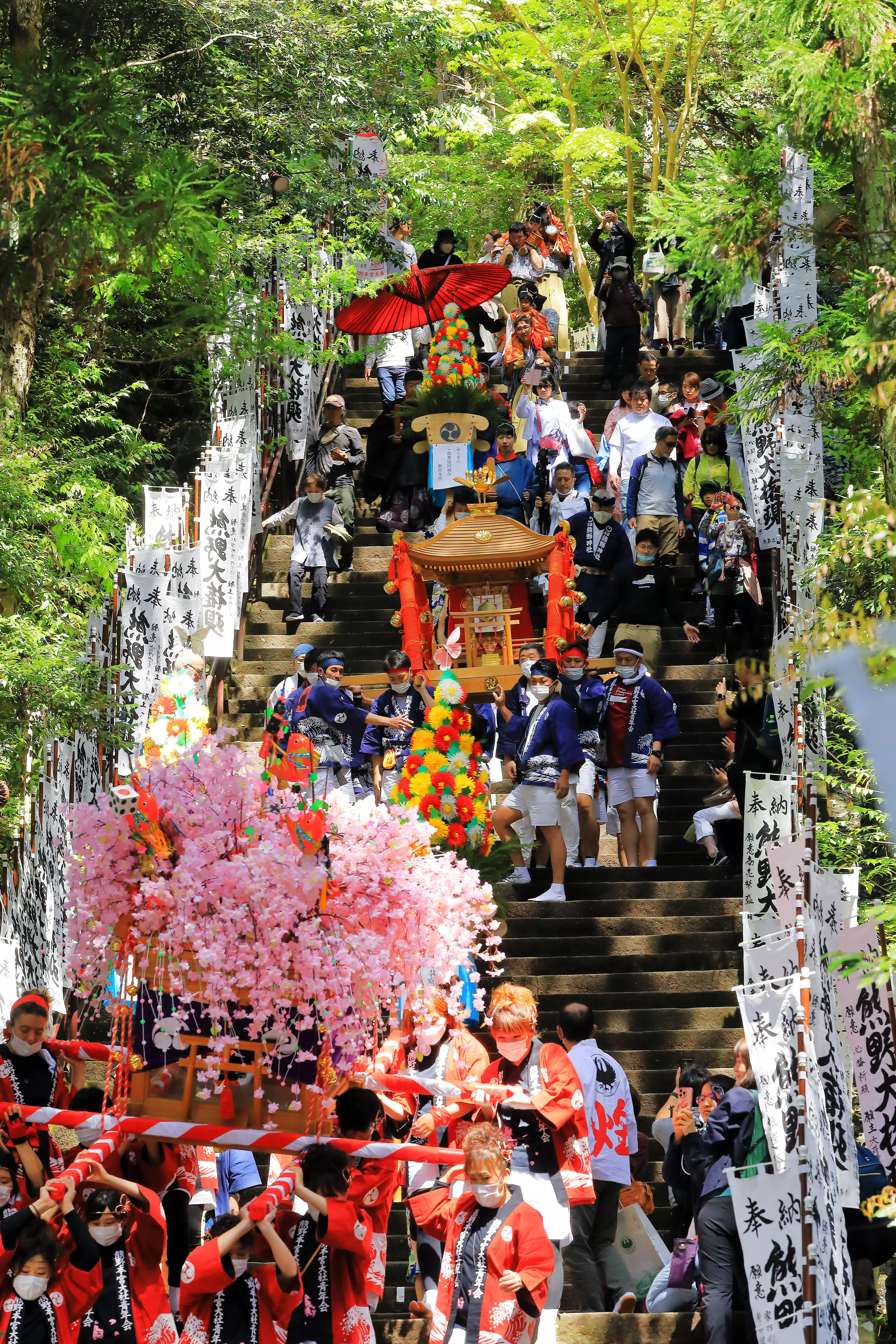
Even today, many worshippers still visit the original site at Oyunohara. Major rituals, including the annual grand festival, are still held there.
[ In Spring, Oyunohara is also a popular Cherry Blossom Viewing Spot in Wakayama Prefecture. ]
For more details, please visit the Kumano Hongu website (JP/ENG)
Festivals at the Kumano Hongu Taisha
Held in Spring, this is the shrine's most important festival. Over three-days, sacred rituals and lively processions take place.
Kumano Hongu Taisha Grand Festival (April 13-15)
This spring festival is the most important festival at Kumano Motomiya Shrine, and is a three-day event featuring sacred ceremonies and lively processions.
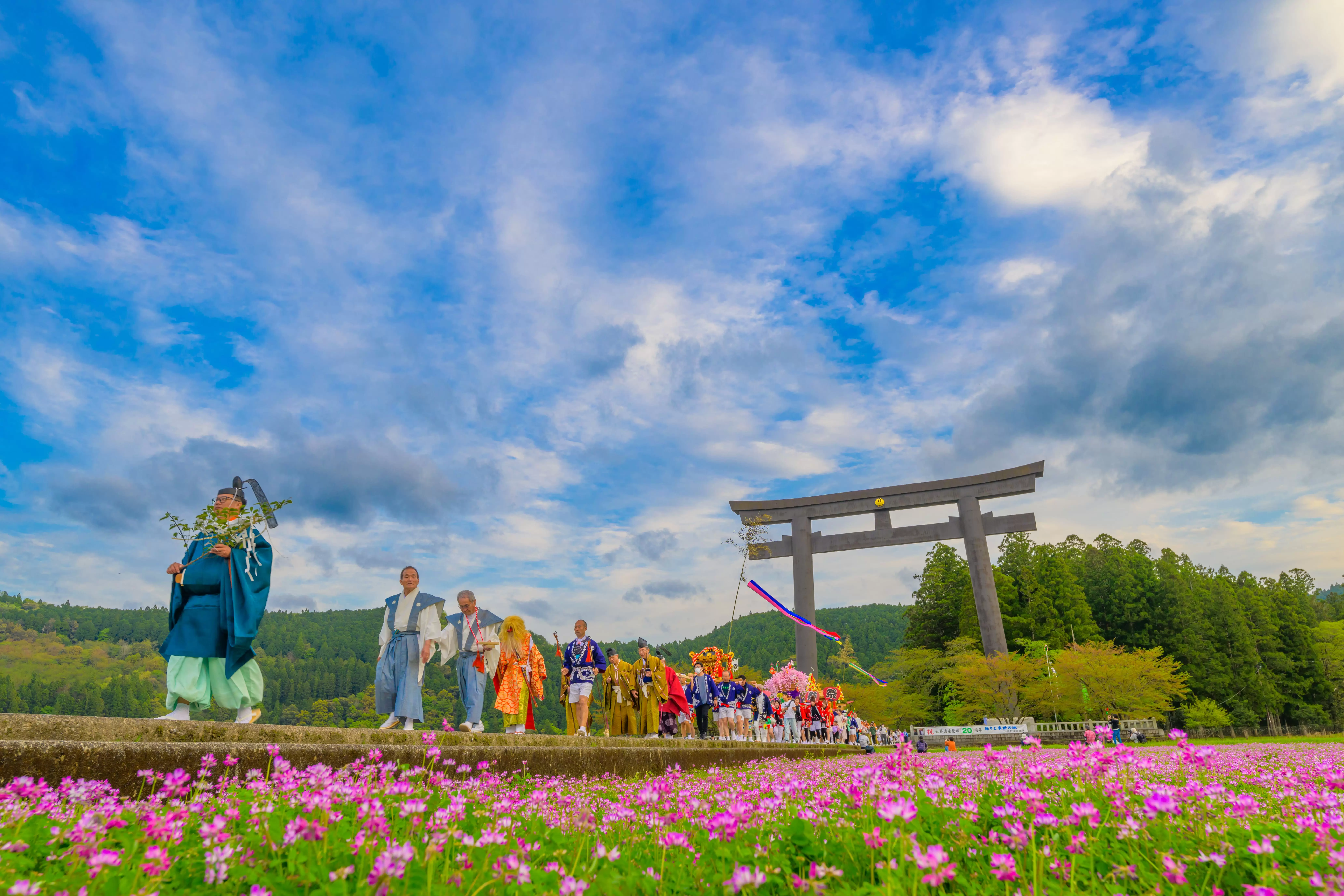
It begins on April 13, with the Yunobori Ritual and Miyawatashi Ritual, where priests and children dressed as sacred messengers walk the ancient mountain path known as "Ōnichi-goe" towards Oyunohara. Along the way, they purify themselves and pray for the safety and peace of the festival. The children, considered as divine messengers, are carried on shoulders, creating a warm and sacred place.
On April 14, various prayer ceremonies and a vigil are held, leading up to the main festival on April 15.
During the Main Shrine Ritual on April 15, the virtues of the principal deity Kumano Fusumi no Kami are honored, and prayers are offered for national peace and the well-being of the people. This is followed by the Procession Ritual, where the deity's sacred object is placed in a portable shrine and transferred to Oyunohara.
At the original site, performances of dance and music take place, and the festival reaches its most vibrant state.
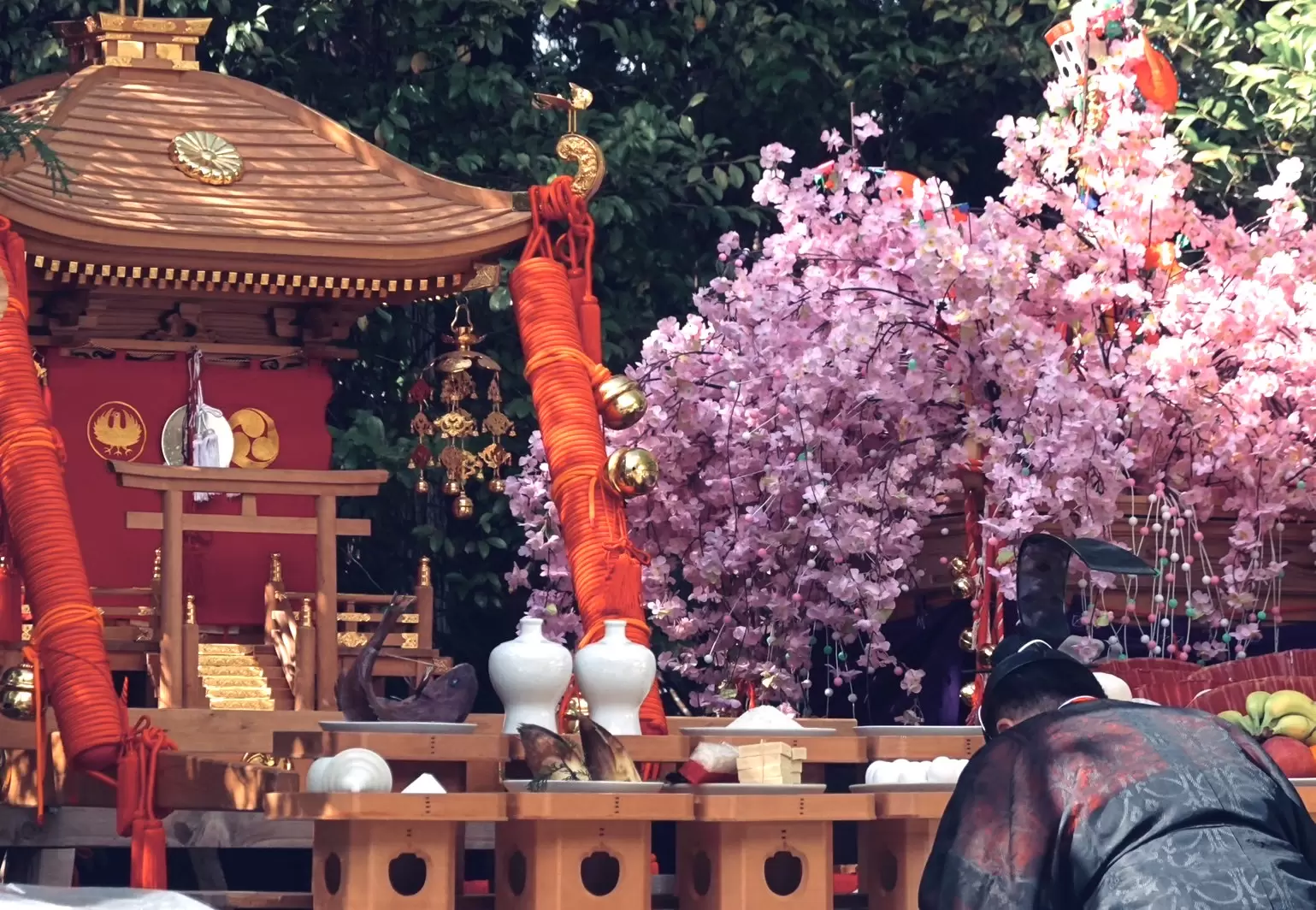
In the latter half of the Procession Ritual, ascetic monks perform the fire rituals and mochi throwing. The mochi come in white and red varieties, and those who catch a red mochi receive a "Chōbana".
The "Chōbana" is a decorative flower resembling a chrysanthemum and is considered a lucky charm symbolizing bountiful harvests and good health. The festive moment leaves a lasting impression on participants.
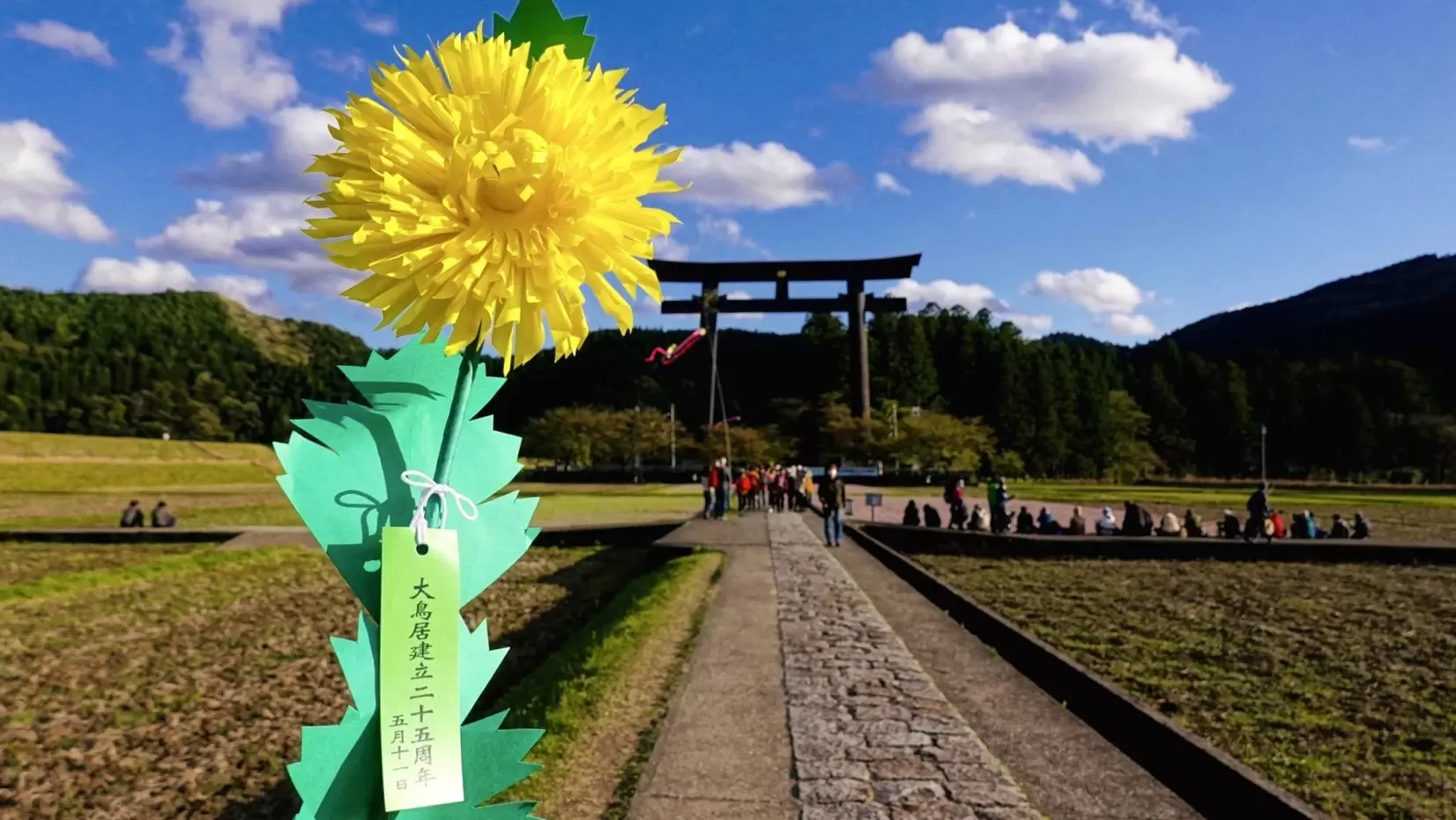
Yatagarasu Fire Festival
Although not hosted by the Kumano Hongu Taisha itself, this event is organized by Hongu Town, and held at the sacred site of Oyunohara, with the shrine's cooperation. Featuring fire, drums, and fireworks, it creates a powerful and mystical atmosphere that captivates many attendees each autumn.
*In 2025, the event will be held on Saturday, October 11th from 5:00 PM
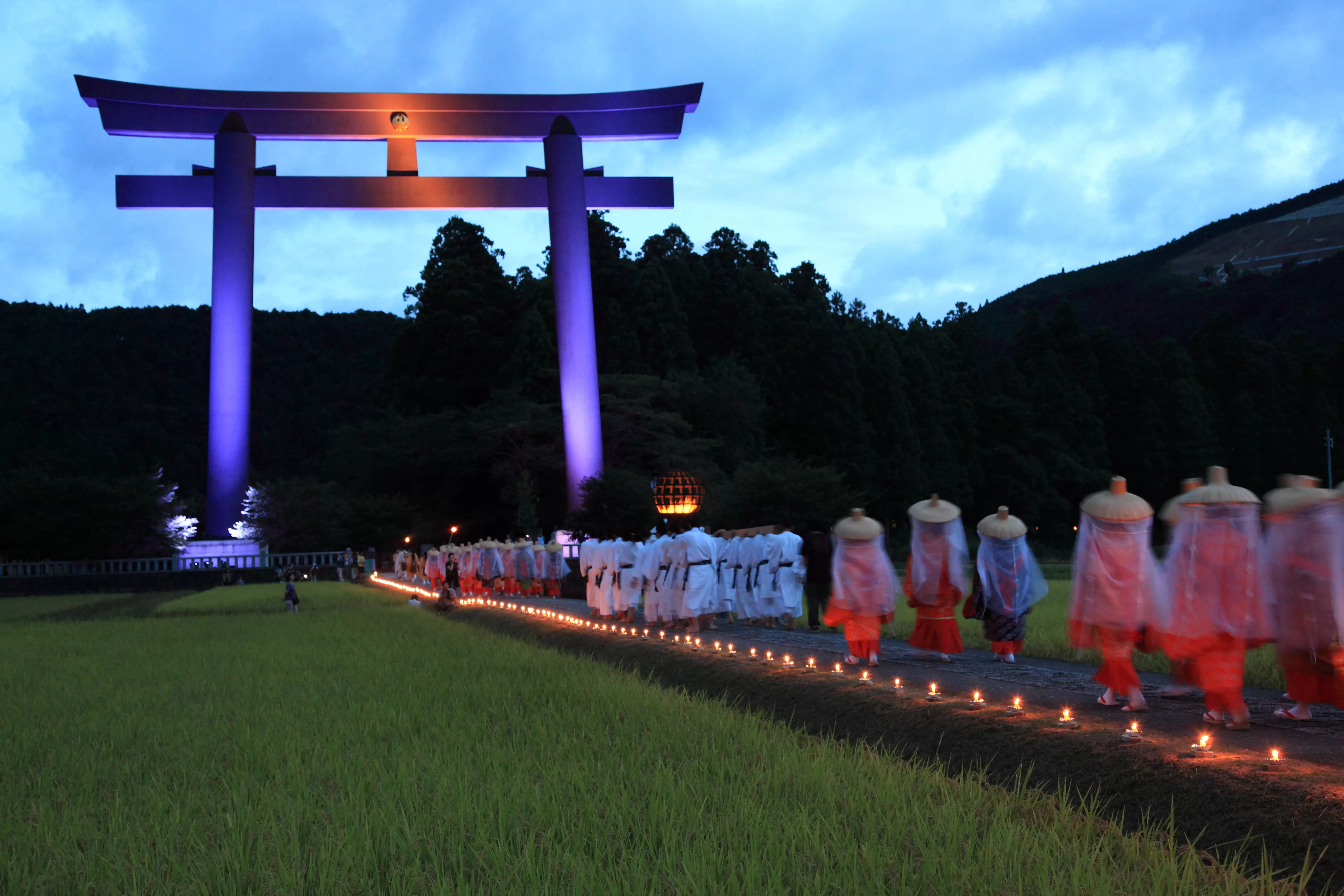
Inspired by the legend of the Yatagarasu, the sacred crow that guided Emperor Jimmu when he was lost in the mountains of Kumano, this festival is said to "Guide the people to Happiness".
For details on festivals and events, click here (JP/ENG)
A Deep Prayer Through Visiting All Three Shrines
After visiting Kumano Hongu Taisha, be sure to also visit the Kumano Hayatama Taisha, Kumano Nachi Taisha, and Seiganto-ji to complete the pilgrimage to the Three Grand Shrines of Kumano.
By walking the Kumano Kodo, a path travelled by countless pilgrims since ancient times, you'll experience Kumano not just as a tourist destination, but as a land of spiritual rebirth.
↓ Kumano Sanzan series
